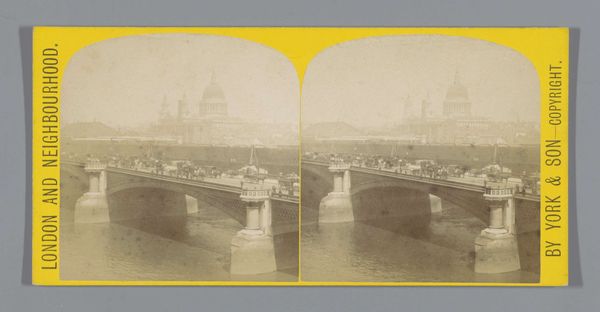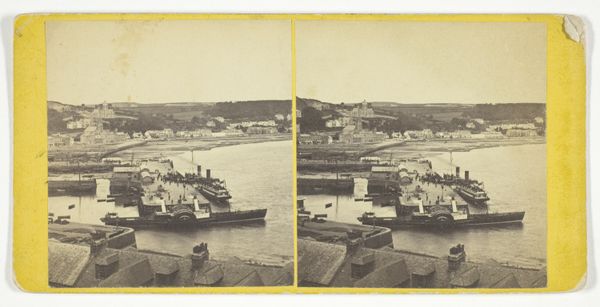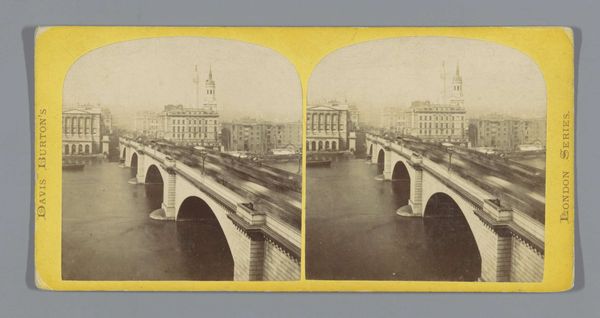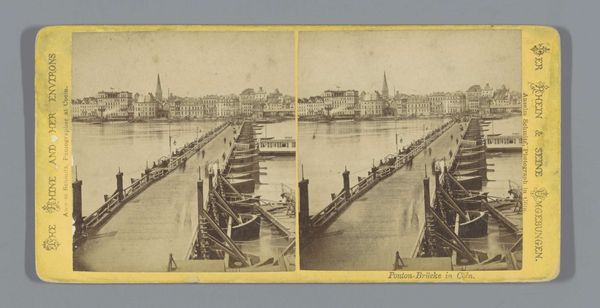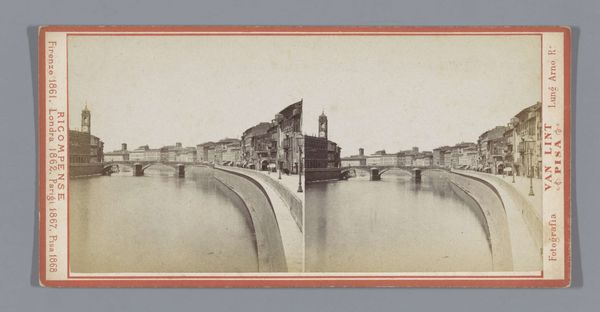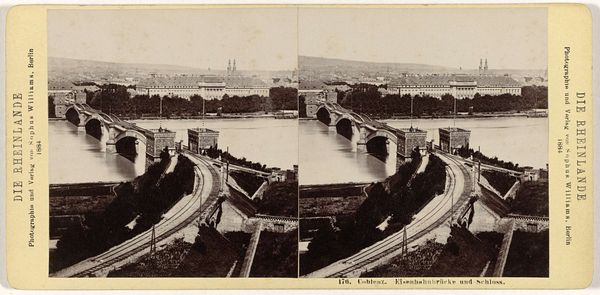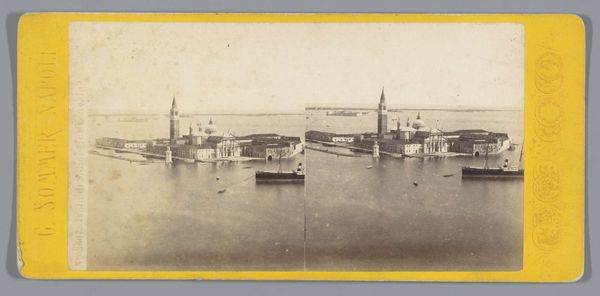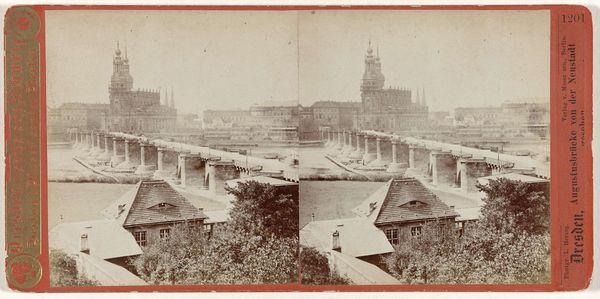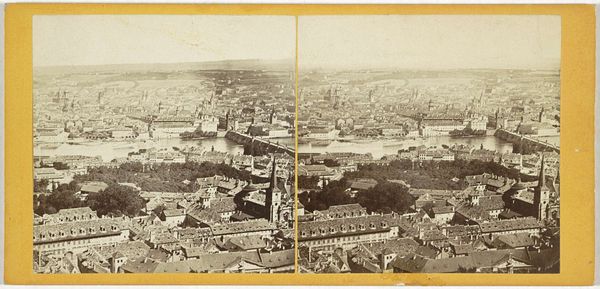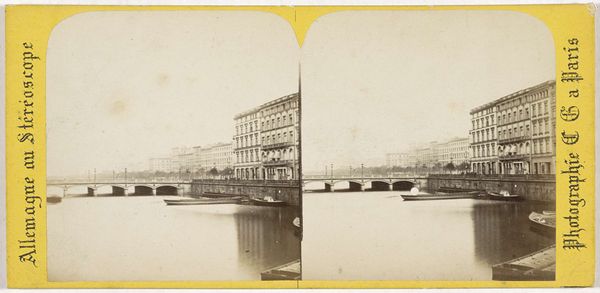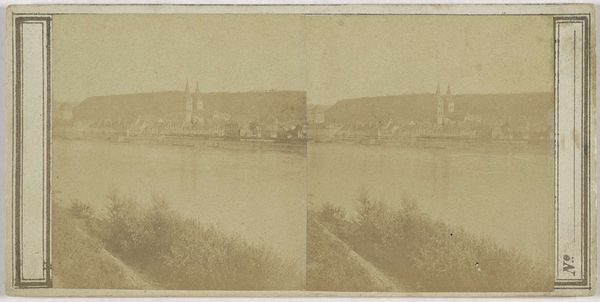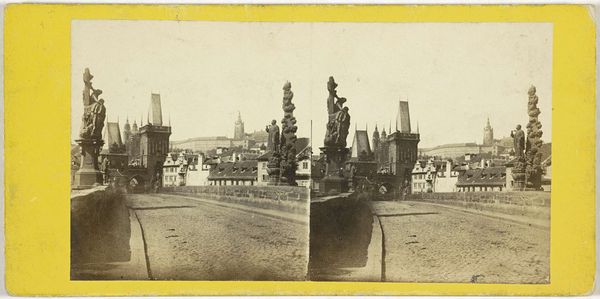
Gezicht op Hradčany en Malá Strana met op de voorgrond de Moldau, Praag 1855 - 1868
0:00
0:00
daguerreotype, photography
#
landscape
#
daguerreotype
#
photography
#
cityscape
#
realism
Dimensions: height 82 mm, width 173 mm
Copyright: Rijks Museum: Open Domain
Editor: So, here we have František Fridrich's "View of Hradčany and Malá Strana with the Vltava River in the Foreground, Prague," a daguerreotype created sometime between 1855 and 1868. It's fascinating to see such detail captured so early in photography. How would you approach understanding this piece? Curator: Considering the materiality of this daguerreotype, its creation relies heavily on specific chemical processes and the labor involved in preparing the plate, capturing the image, and developing it. How do you think the labor and availability of materials influenced the image itself? Editor: I hadn’t really considered that. I suppose the limited availability of materials would have impacted who could produce these images and therefore whose perspectives were being captured. The cost must have also played a part. Curator: Exactly. The daguerreotype process, while revolutionary, was also commercially driven. Think about who commissioned these cityscapes. What were their motivations, and how does that affect our interpretation of Prague at that time? This image wasn't merely a 'snapshot'; it represents a deliberate act of framing and production tied to consumption. Do you see any hints about Prague's social and economic realities embedded within the composition? Editor: Well, the imposing castle in the background emphasizes power. And the bridge… perhaps points to commerce and trade that was moving through the city? It does feel carefully staged in a way that downplays the everyday realities for many people, you know? Curator: Precisely! By focusing on the physical production and its societal context, we move beyond admiring the scenery and consider who had the power to represent Prague and for what purpose. That adds so many new layers. Editor: Absolutely. Considering the materials and processes opens up a much richer understanding of the artwork’s historical context. It is fascinating to dig into the material reality that shapes its representation.
Comments
No comments
Be the first to comment and join the conversation on the ultimate creative platform.
